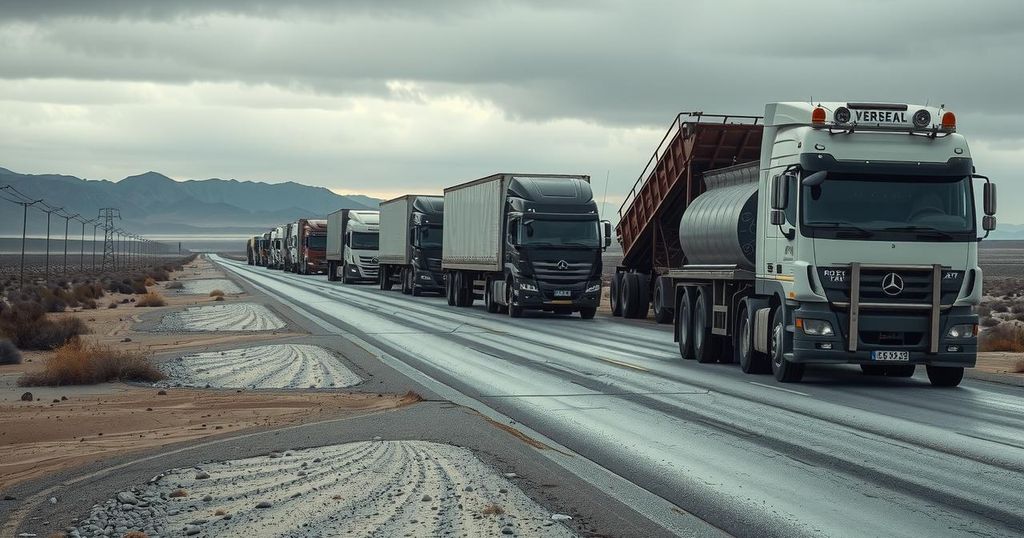Truck drivers in Iran have launched strikes, blocking roads and ports in protest against low wages and proposed fuel price hikes. The movement, now widespread and backed by dissidents, focuses on escalating economic pressures and could lead to broader protests. Authorities have noted the strikes and are discussing responses, but tensions remain high.
In Iran, truck drivers are stepping up their protest actions, blocking roads and ports as they voice frustration over low wages, high insurance costs, and fears of an impending fuel price increase. The strike, which initially kicked off last Thursday in Bandar Abbas, a major port city, has now spread throughout the country, gaining momentum and drawing support from well-known critics of the regime. Some analysts suggest this could deepen into broader anti-government protests.
Recently, Iranian officials disclosed plans to raise fuel prices for trucks significantly—from 4 cents per liter to nearly 50 cents—by the end of June. Iran usually boasts some of the cheapest fuel prices globally, largely due to its abundant oil and gas resources. For perspective, on Wednesday, fuel prices in the U.S. averaged $3.16 per gallon, revealing how starkly different the fuel dynamics are.
Notable figures, including film director Jafar Panahi, who just garnered the Palme d’Or at Cannes, have expressed solidarity with the striking truckers. Panahi encouraged them to escalate their actions into a countrywide strike, emphasizing on Instagram, “The strike is a loud cry to the government: enough is enough! Stop the massive suppression and plundering before everything is lost.”
Nobel Peace Prize winner Narges Mohammadi, currently serving time on charges against state security, also took to social media platform X, backing the truckers during this critical time. Meanwhile, social media is awash with videos showing trucks parked along major thoroughfares, highlighting the scale of the action.
The Iranian government justifies the fuel price hikes as a strategy to curb smuggling into neighboring countries like Pakistan, where fuel is significantly pricier. This strike taps into a history of protests in Iran, many of which started over economic issues—such as the widespread discontent in 2017 and 2019 arising from government subsidies being cut. Those protests saw a harsh crackdown by authorities, including the imprisonment of over a thousand people.
A spokesperson for the truckers’ union, Jalal Mousavi, stated that their fiight reflects the escalating economic hardships, stemming from rising costs for fuel and vehicle maintenance. The ongoing strike adds pressure on an already vulnerable Iranian economy, currently struggling under U.S. sanctions linked to its nuclear program—an issue still in negotiation.
On the government’s side, Fatemeh Mohajerani, Cabinet spokesperson, reassured that the strike and its causes had been deliberated among lawmakers. She mentioned that the administration would actively consider the truckers’ grievances, while state media showcased ongoing operations in truck terminals, perhaps to project an image of normalcy amid the unrest.
The truckers’ protests in Iran illustrate significant economic discontent stemming from governmental decisions on fuel pricing, wages, and social conditions. Supported by prominent dissidents, these strikes reflect a broader narrative of unrest in the country. With historical roots in economic grievances, the protests could signal a shift towards larger anti-government mobilizations if the government fails to respond adequately to the truckers’ demands.
Original Source: www.usnews.com






